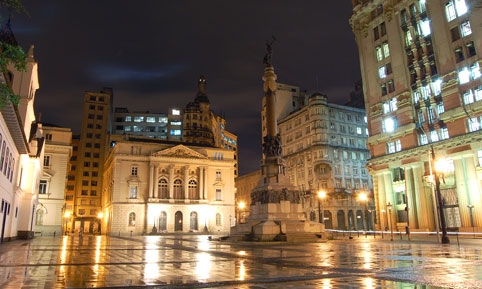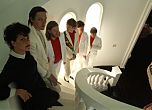
São Paulo, city of skyscrapers and urban canyons, isn’t exactly famous for its historic buildings. But look between the glass-and-steel high-rises and you'll discover splashes of history, encapsulated in a small but rewarding set of churches, houses, and museums.
In a homage to the city, which celebrates its 458th anniversary on 25 January 2012, we've cooked up a walking tour of downtown São Paulo, where some of the best bits are. So take to the streets and absorb the city’s centuries of history, close up.
1. Capela dos Aflitos
Capela dos Aflitos, Rua dos Aflitos 70, Liberdade
To start the circuit on a slightly sinister note, we recommend this little Liberdade chapel just a block away from Liberdade metrô station. The official explanation for this church’s name, ‘Chapel of the Afflicted’, is that it’s a reference to the saint Nossa Senhora dos Aflitos. The off-the-record version is even darker, as the name allegedly refers to the woes of slaves that hanged in the place where the Largo da Liberdade currently stands. History tells us its former name was more ominous still: Largo dos Enforcados, or ‘Hanged Men Square’. Free.
2. Cripta da Sé
Praça da Sé (no number), Sé, 3107 6832
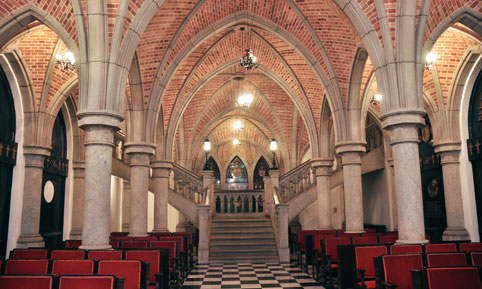 |
The majestic silhouette of the Catedral da Sé is a well known shape on the city’s skyline, but lesser known is the cathedral’s underground crypt – the Cripta da Sé. Decorated with a series of bronze sculptures, this is the final resting place of many of the city’s bishops and historical figures, such as the cacique – ‘Indian chief’ – Tibiriçá, the first São Paulo native to convert to Catholicism, and Diogo Feijó, a bishop who governed Brazil for a brief period in 1835.
Locals might be hesitant to advise tourists to visit the crypt, but guide Vera Tibiriçá notes, ‘Our usual visitors are not from here. People from the city usually aren’t very interested in the city’s history or don’t even know this place exists.’ The grass is always greener, we guess. Open 10-11.30am, 1-5.30pm Mon, Wed-Fri; 1-4.30pm Sat; 8am-1pm, 2-6pm Sun. Free.
3. Museu Padre Anchieta
Pátio do Colégio 2, Sé, 3105 6899, pateocollegio.com.br
Walking across busy Praça da Sé towards Rua Santa Teresa, the noise fades to the quiet calm of Pátio do Colégio. This site marks the birthplace of São Paulo. Its first building, a school – the Colégio de São Paulo de Piratininga – was established as a base for Portuguese efforts to convert the native people to Catholicism. The old school building has been remodelled many times over the centuries, and now houses a museum in honour of one of its founders, Padre Anchieta. Open 9am-4.45pm Tue-Fri; 9am-4.40pm Sat, Sun. Admission R$5. Read more about Museu Padre Anchieta
4. Casa da Imagem
Rua Roberto Simonsen 136-B, Sé, 3106
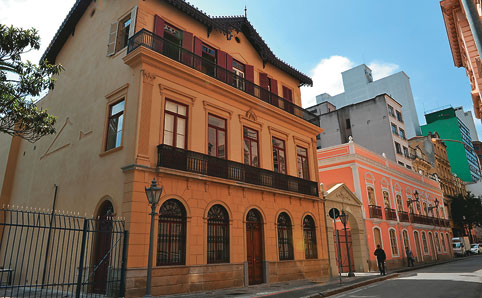 |
www.museudacidade.sp.gov.br
Next door to the Solar da Marquesa de Santos lies the Casa da Imagem, another recently-renovated history building (it reopened in November 2011), which boasts an immense photographic archive of historical São Paulo - 710,000 photographs to be precise, plus a digital database of 120,000 images. Open 9am-5pm. Free. Read more on Casa da Imagem
5. Solar da Marquesa de Santos
Rua Roberto Simonsen 136-A, Sé, 3396 60475122,
Only a few metres away from the Museu Padre Anchieta is the recently renovated Solar da Marquesa de Santos which between 1834 and 1867 was home to the Marquise de Santos, sometime-mistress of the first Emperor of Brazil, Dom Pedro I. Open 9am-5pm. Free.
6. Portal do Antigo Presídio Tiradentes and Museu de Arte Sacra
Avenida Tiradentes 679, Luz, 3326 1373, museuartesacra.org.br
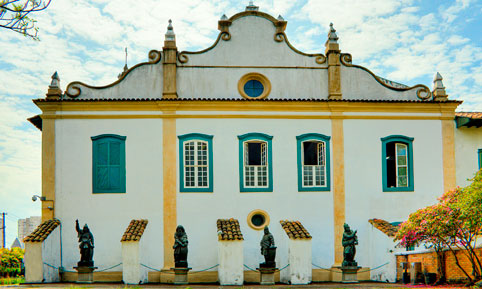 |
Leaving Pátio do Colégio, take the metrô blue line north from Sé to Tiradentes station. We’d advise you to exit the station twice: first, take the Praça Coronel Fernandes Prestes exit for a peek at the former doorway of the Presídio Tiradentes, a prison dating from 1825. The penitentiary was razed in 1972, to make room for the metrô station. Now, this relatively modest stone arch is all that remains, serving as an entryway to a bank.
Return to the metrô and exit a second time to see some of São Paulo’s finest religious art. The Museu da Arte Sacra (‘Museum of Sacred Art’) is located in the west wing of an 18th-century monastery that still maintains its original structure and foundation – the only building in São Paulo that can claim this. For that reason alone it’s worth a visit, but the collection of religious art – from baroque sculptures to church altars, ornaments and jewellery – is impressive as well. Open 10am-6pm Tue-Sun. Free. Read more on Museu de Arte Sacra
7. Casa do Bandeirante
Praça Monteiro Lobato (no number), Butantã, 3031 0920
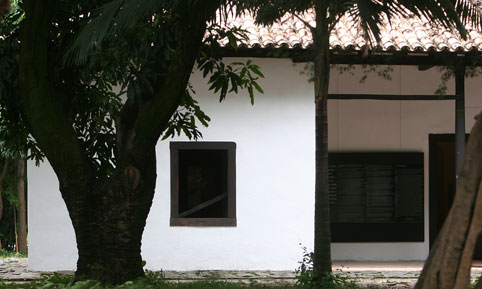 |
We’ve saved the furthest stop on our excursion for last. Take the metrô from Tiradentes station to Luz and transfer to the yellow line for Butantã. A bus ride from the station on the 809 L-Lapa bus will take you to the Casa do Bandeirante. One of the few remaining colonial rural houses from the 18th century, it dates back to the time of mercenary explorers.
The bandeirantes, key figures in the city’s development, expanded São Paulo’s territory while searching for gold and valuable goods for the Portuguese rulers. The property was restored by the architect Luís Saia in the early 1950s. It’s since been transformed into a permanent monument to the bandeirantes, and currently displays an exhibition of 18th-century period furniture and historical objects from São Paulo’s founding mercenaries. Open 9am-5pm Tue-Sun. Free.

